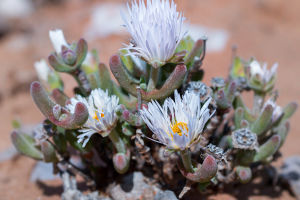Have you ever paused to wonder what transforms a simple dish into an unforgettable experience? Often, it's the subtle presence of an aromatic leaf that brings depth and warmth to the flavor.
Piper auritum, widely known as Blue Pepperleaf, is one such plant whose unique fragrance has been enchanting cooks and cultures throughout Mexico and Central America for centuries.
Its strong, spicy aroma combined with versatile culinary uses makes it a fascinating topic for anyone interested in the power of natural flavors.
The Distinctive Fragrance of Blue Pepperleaf
Piper auritum stands out with its large, heart-shaped leaves that carry a complex aroma reminiscent of pepper, mixed with herbal and citrus notes. This fragrance results from a blend of essential oils within the leaf, which release their scent when crushed or heated.
Unlike black peppercorns that mainly provide heat, Blue Pepperleaf offers a multidimensional flavor—earthy, minty, and slightly floral—making it a favored ingredient in both savory and sweet dishes.
This complexity allows the leaf to enhance dishes without overpowering them. It's this balance that sets Blue Pepperleaf apart as a natural seasoning in traditional cooking.
Culinary Uses That Bring Flavor to Life
1. Wrapping and Roasting: Fresh leaves are often used to wrap meats, fish, or vegetables before roasting or grilling. The leaf infuses the food with its distinct aroma while keeping it moist and tender.
2. Stews and Soups: Adding Blue Pepperleaf to soups or stews during cooking enriches the broth with its subtle, spicy notes.
3. Herbal Tea: The leaves can be brewed into a fragrant tea, enjoyed both for its flavor and its soothing qualities.
Cooks appreciate this leaf for its ability to add depth to dishes naturally, without relying on artificial additives or heavy spices.
Cultural Significance and Tradition
Blue Pepperleaf is not just a culinary ingredient but a cultural emblem deeply embedded in the lives of indigenous communities. It has been used for generations, not only to flavor food but also in traditional medicine and rituals.
Ethnobotanists note that such plants carry ancestral knowledge, representing a connection to the environment and cultural identity. Dr. Maria Reyes explains, "Piper auritum is more than flavor—it's a living piece of cultural heritage that tells stories of people and place."
The leaf's aromatic presence in traditional recipes preserves a culinary heritage that continues to inspire modern chefs and food enthusiasts.
How to Use Blue Pepperleaf at Home
If you want to explore Piper auritum's unique aroma, here are some simple ways to incorporate it into your cooking:
1. Start by using one or two fresh leaves to wrap chicken or fish before baking or grilling.
2. Chop dried leaves and add them to simmering soups or rice dishes for a mild spicy note.
3. Brew fresh or dried leaves in hot water for a soothing, aromatic tea.
Because the leaf's scent is quite strong, it's best to start with small amounts and adjust according to taste.
Why It Matters Today
In a world filled with processed flavors and shortcuts, Blue Pepperleaf reminds us of the power of natural ingredients and traditional wisdom. It teaches us to appreciate the complexity behind a single leaf—the way it can shape the aroma and flavor of food while connecting us to cultural roots.
Next time you savor a well-seasoned dish, consider the journey of its flavors—from wild tropical forests to your kitchen table. What other natural secrets might you discover to enrich your cooking and deepen your appreciation for food's cultural stories?
Are you ready to add this aromatic wonder to your spice collection and bring a fresh, vibrant note to your meals?


